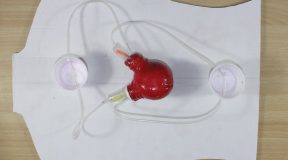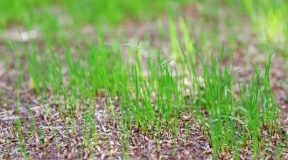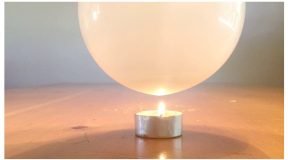
Science Fair Project How to keep an apple from turning brown:
why do apples turn brown when exposed to air? The chemical reaction causes an apple, and other fruits and vegetables to turn brown because of Enzymes that are the proteins which react with its environment, changing the color of an apple or other to brown. Enzymes are also present in your stomach, helping to digest food.To keep an apple from turning brown, the shape of an enzyme can be altered by changing the pH level of its environment.
The enzyme of an apple is named catecholase. This enzyme can only function properly if the pH level of the apple or potato is natural. In this project we will alter the pH level in an apple to see if we can alter the shape of the catecholase enzyme. Let’s see what happens to the apple ?
Hypothesis:
By altering the pH level of the apple, it will prohibit the catecholase enzyme from turning the apple brown.
Variables:
- pH level of each apple and potato, pH level of lemon juice, pH level of saltwater
Materials Needed to keep an apple from turning brown
- Three apples
- Three potatoes
- Lemon juice
- Table salt
- Water
- Cup
- Spoon
- Vegetable peeler
- Stopwatch
- ph Test kit ( available from science supply store )
- Paper
- Pencil
Set up to keep an apple from turning brown
- Use the vegetable peeler to remove a small portion of the skin of one apple. We will not alter the pH level of this apple. Therefore, this apple will be considered your "control" group.
- Observe the apple. Use your stopwatch to determine the time it takes for this apple to turn brown. Repeat setup steps #1 and #2 with one potato.
- Determine the pH of the lemon juice and record this information.
Procedures :
- Peel a portion of skin off the second apple. Immediately pour the lemon juice over the exposed area. Use the stopwatch to count the time it takes to turn brown. Note: Impose a twenty minute limit. Repeat step #1 with the second potato. Record this information.
- Compared to your control group, did it take a longer or shorter amount of time for the apple or potato to turn brown?
- Fill the cup with water, then add salt and stir with the spoon. Dissolve well. Determine the pH level of the salt water using the pH test kit.
- Peel a portion of skin from the third apple. Immediately pour the salt water over the exposed area. Time it again with your stopwatch. How long does it take to turn brown this time ?
Note: Impose a twenty minute limit. Repeat step #3 with the third potato. Record this information. Compared to your control group, did it take longer or shorter amount of time to turn the apple or potato brown?
Summary of Results:
If it has taken longer for an apple or potato to change its color to brown, then the shape of the enzymes within them has been changed.
The lemon juice and saltwater have altered the pH level of the environment surrounding the apple and potato enzymes. Enzymes maintain their shape when they have a neutral pH level of 7.0.
What were the pH levels of the lemon juice and saltwater? Did the lemon juice and saltwater cause the enzyme to be too acidic or too basic?
Download Chemistry Experiments and Science Projects in PDF
Biology Experiment – How to Extract DNA From a Banana
100 Best Food science experiments and projects for kids







